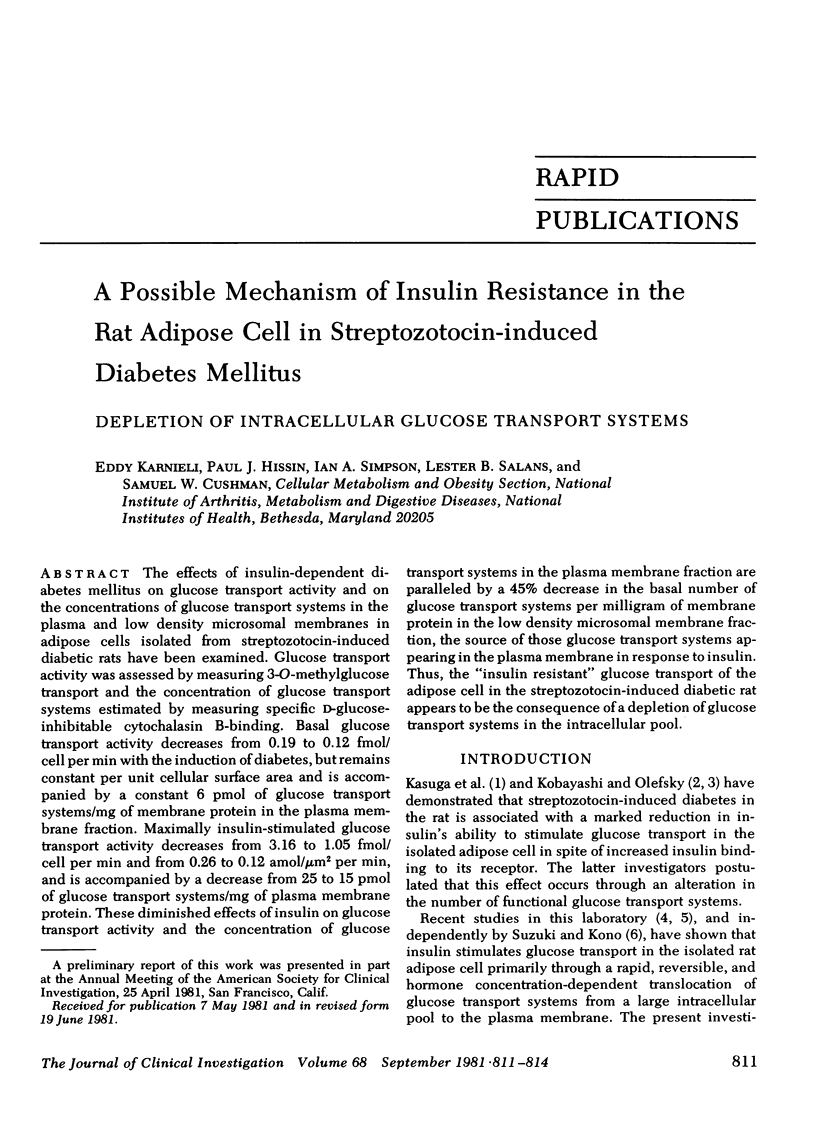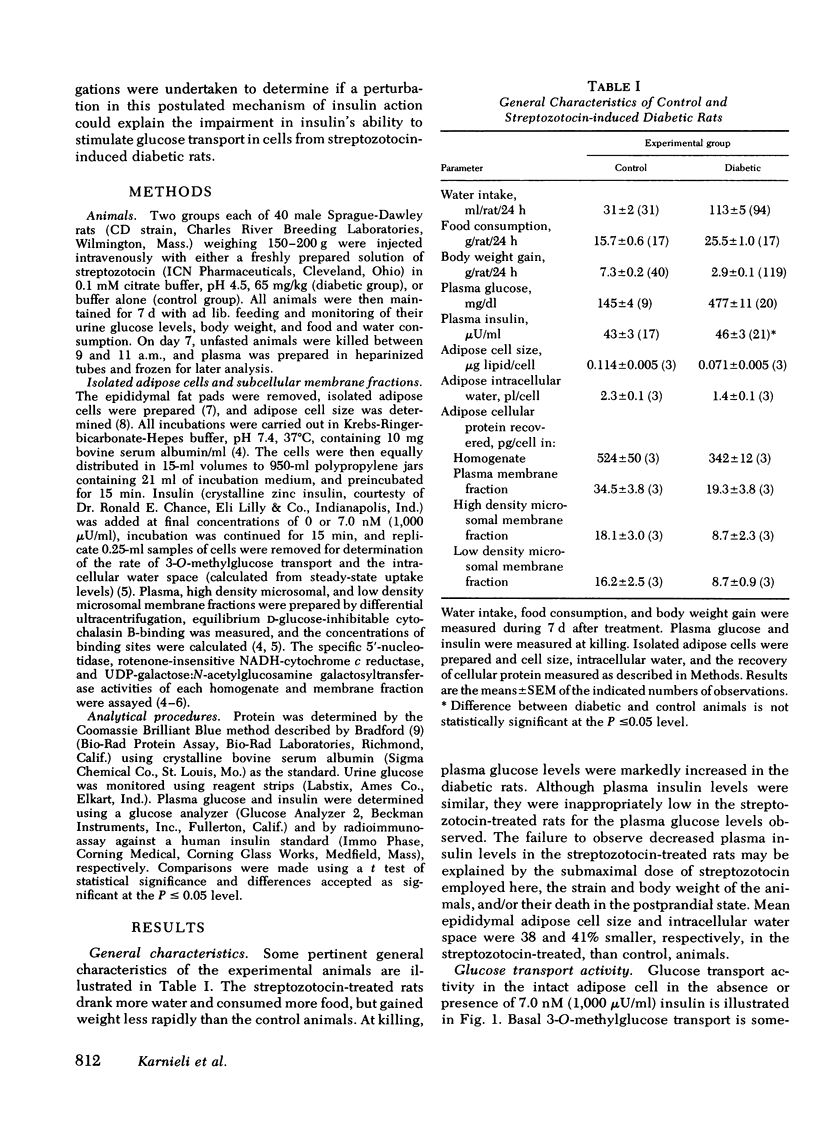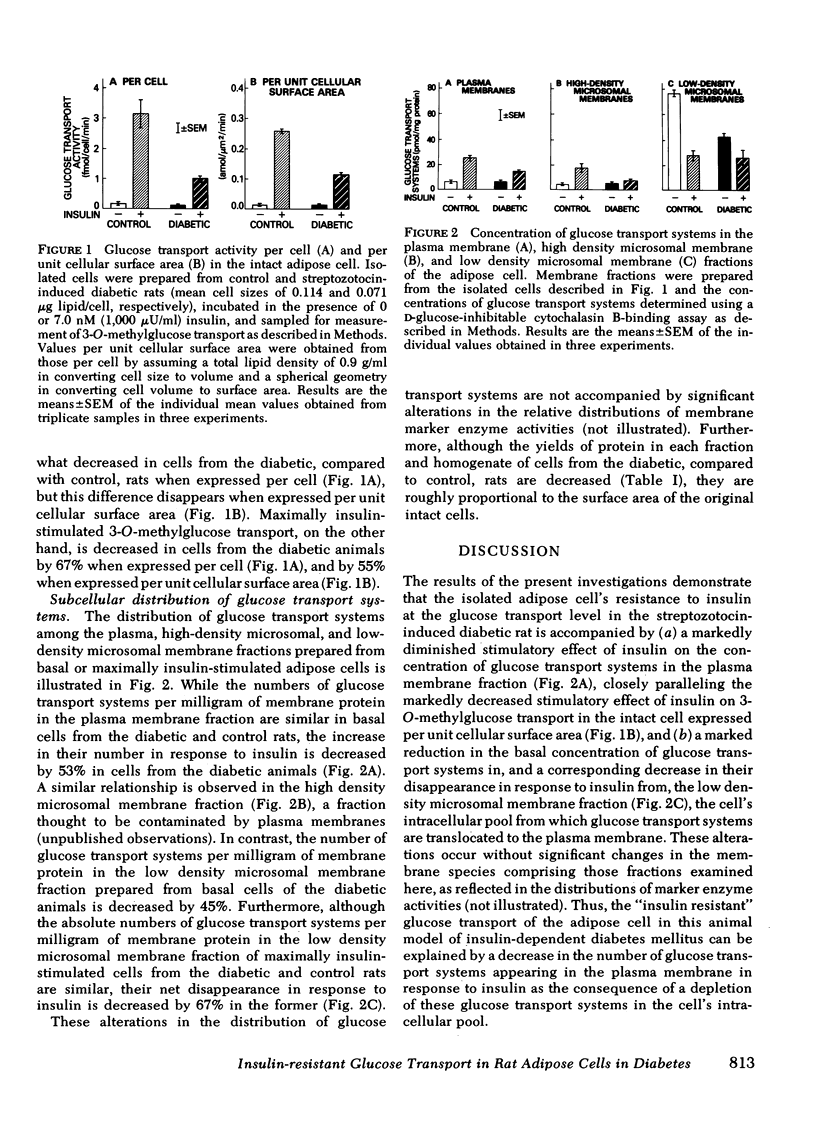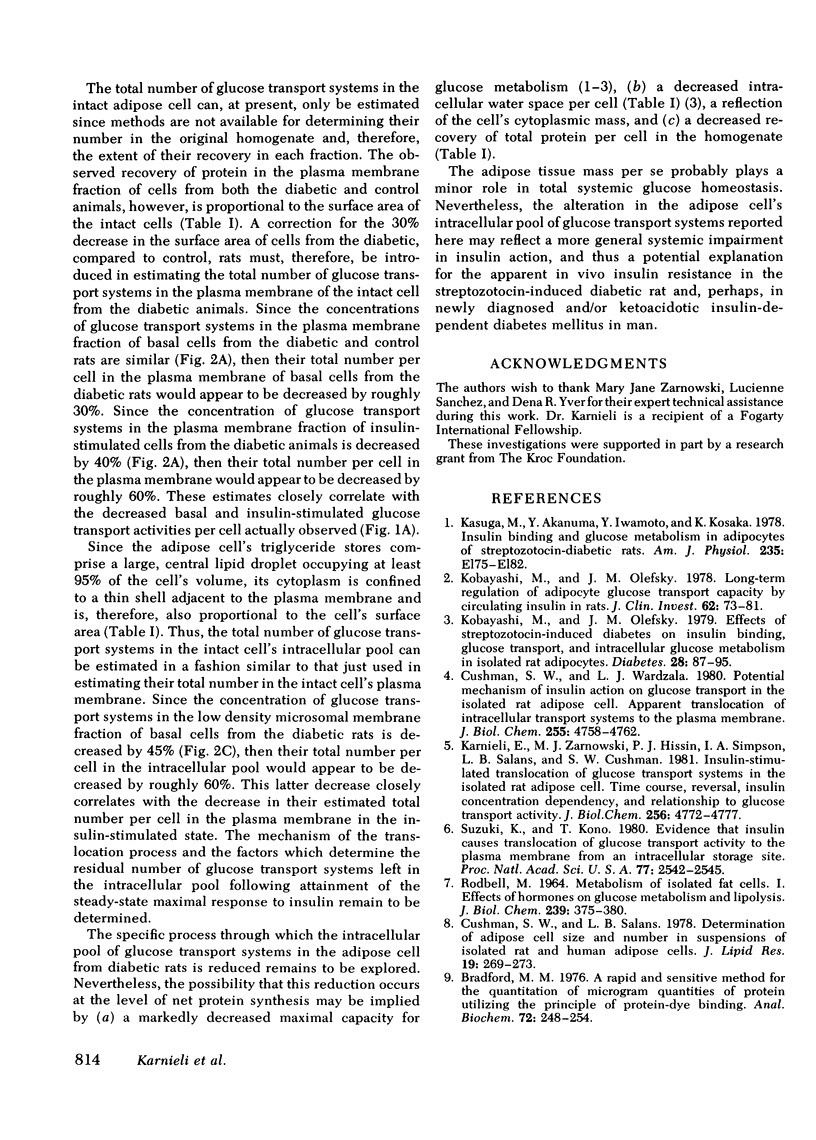Abstract
The effects of insulin-dependent diabetes mellitus on glucose transport activity and on the concentrations of glucose transport systems in the plasma and low density microsomal membranes in adipose cells isolated from streptozotocin-induced diabetic rats have been examined. Glucose transport activity was assessed by measuring 3-O-methylglucose transport and the concentration of glucose transport systems estimated by measuring specific D-glucose-inhibitable cytochalasin B-binding. Basal glucose transport activity decreases from 0.19 to 0.12 fmol/cell per min with the induction of diabetes, but remains constant per unit cellular surface area and is accompanied by a constant 6 pmol of glucose transport systems/mg of membrane protein in the plasma membrane fraction. Maximally insulin-stimulated glucose transport activity decreases from 3.16 to 1.05 fmol/cell per min and from 0.26 to 0.12 amol/micrometers 2 per min, and is accompanied by a decrease from 25 to 15 pmol of glucose transport systems/mg of plasma membrane protein. These diminished effects of insulin on glucose transport activity and the concentration of glucose transport systems in the plasma membrane fraction are paralleled by a 45% decrease in the basal number of glucose transport systems per milligram of membrane protein in the low density microsomal membrane fraction, the source of those glucose transport systems appearing in the plasma membrane in response to insulin. Thus, the "insulin resistant" glucose transport of the adipose cell in the streptozotocin-induced diabetic rat appears to be the consequence of a depletion of glucose transport systems in the intracellular pool.
Full text
PDF



Selected References
These references are in PubMed. This may not be the complete list of references from this article.
- Bradford M. M. A rapid and sensitive method for the quantitation of microgram quantities of protein utilizing the principle of protein-dye binding. Anal Biochem. 1976 May 7;72:248–254. doi: 10.1016/0003-2697(76)90527-3. [DOI] [PubMed] [Google Scholar]
- Cushman S. W., Salans L. B. Determinations of adipose cell size and number in suspensions of isolated rat and human adipose cells. J Lipid Res. 1978 Feb;19(2):269–273. [PubMed] [Google Scholar]
- Cushman S. W., Wardzala L. J. Potential mechanism of insulin action on glucose transport in the isolated rat adipose cell. Apparent translocation of intracellular transport systems to the plasma membrane. J Biol Chem. 1980 May 25;255(10):4758–4762. [PubMed] [Google Scholar]
- Karnieli E., Zarnowski M. J., Hissin P. J., Simpson I. A., Salans L. B., Cushman S. W. Insulin-stimulated translocation of glucose transport systems in the isolated rat adipose cell. Time course, reversal, insulin concentration dependency, and relationship to glucose transport activity. J Biol Chem. 1981 May 25;256(10):4772–4777. [PubMed] [Google Scholar]
- Kasuga M., Akanuma Y., Iwamoto Y., Kosaka K. Insulin binding and glucose metabolism in adipocytes of streptozotocin-diabetic rats. Am J Physiol. 1978 Aug;235(2):E175–E182. doi: 10.1152/ajpendo.1978.235.2.E175. [DOI] [PubMed] [Google Scholar]
- Kobayashi M., Olefsky J. M. Effects of streptozotocin-induced diabetes on insulin binding, glucose transport, and intracellular glucose metabolism in isolated rat adipocytes. Diabetes. 1979 Feb;28(2):87–95. doi: 10.2337/diab.28.2.87. [DOI] [PubMed] [Google Scholar]
- Kobayashi M., Olefsky J. M. Long-term regulation of adipocyte glucose transport capacity by circulating insulin in rats. J Clin Invest. 1978 Jul;62(1):73–81. doi: 10.1172/JCI109116. [DOI] [PMC free article] [PubMed] [Google Scholar]
- RODBELL M. METABOLISM OF ISOLATED FAT CELLS. I. EFFECTS OF HORMONES ON GLUCOSE METABOLISM AND LIPOLYSIS. J Biol Chem. 1964 Feb;239:375–380. [PubMed] [Google Scholar]
- Suzuki K., Kono T. Evidence that insulin causes translocation of glucose transport activity to the plasma membrane from an intracellular storage site. Proc Natl Acad Sci U S A. 1980 May;77(5):2542–2545. doi: 10.1073/pnas.77.5.2542. [DOI] [PMC free article] [PubMed] [Google Scholar]


